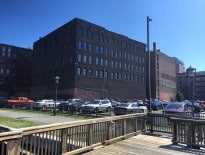New England’s economy benefitted from this year’s mild winter, as lower energy costs put more money back into consumers’ pockets and the tame weather jumpstarted the spring housing market early, according to the most recent Federal Reserve Beige Book.
According to April’s Book, hiring was also up across a variety of sectors and some business contacts even reported wage increases in the Federal Reserve’s First District, which includes all of New England save Connecticut’s Fairfield County.
Manufacturing contacts reported no price pressures on either the supply or the demand side, and some told the Fed that they were finally experiencing the benefits of softer energy costs.
Retail and tourism contacts reported single-digit to 10 percent year-over-year sales increases. The tourism outlook in Boston was particularly strong, the Fed reported. Last year saw all-time highs for hotel occupancy rates (81.8 percent), room rates ($255 per night, up 6 percent from 2014) and contacts expect a strong year boosted by the beginning of new and direct flights from Europe and China.
The First District’s residential real estate markets also saw a strong start to the year, with single-family home sales increasing on a year-over-year basis in February across all six New England states.
“Contacts unanimously cite the mild winter weather and low mortgage rates as explanations for higher-than-usual demand. Additionally, price increases for single-family homes moderated,” the Fed said.
However, contacts also told the Fed that low inventory was beginning to become – or already is – an issue. For single-family homes and condominiums, inventory decreased or remained flat in every state but Rhode Island, and even there, demand is beginning to outstrip supply, the Fed said.
Commercial real estate markets across the First District reported mixed results. Office leasing activity is increasing in Portland and very strong in Boston, but slow in Providence and very slow in Hartford. Construction activity has been increasing significantly in Boston in recent months, and that activity is pushing up wages for skilled trade workers, like carpenters and crane operators. The Fed said that education, health care, hospitality, retail and office sectors have all contributed to Boston’s construction boom.
Meanwhile, new institutional projects have modestly boosted construction activity in Providence, while construction activity remained slow in Hartford.






